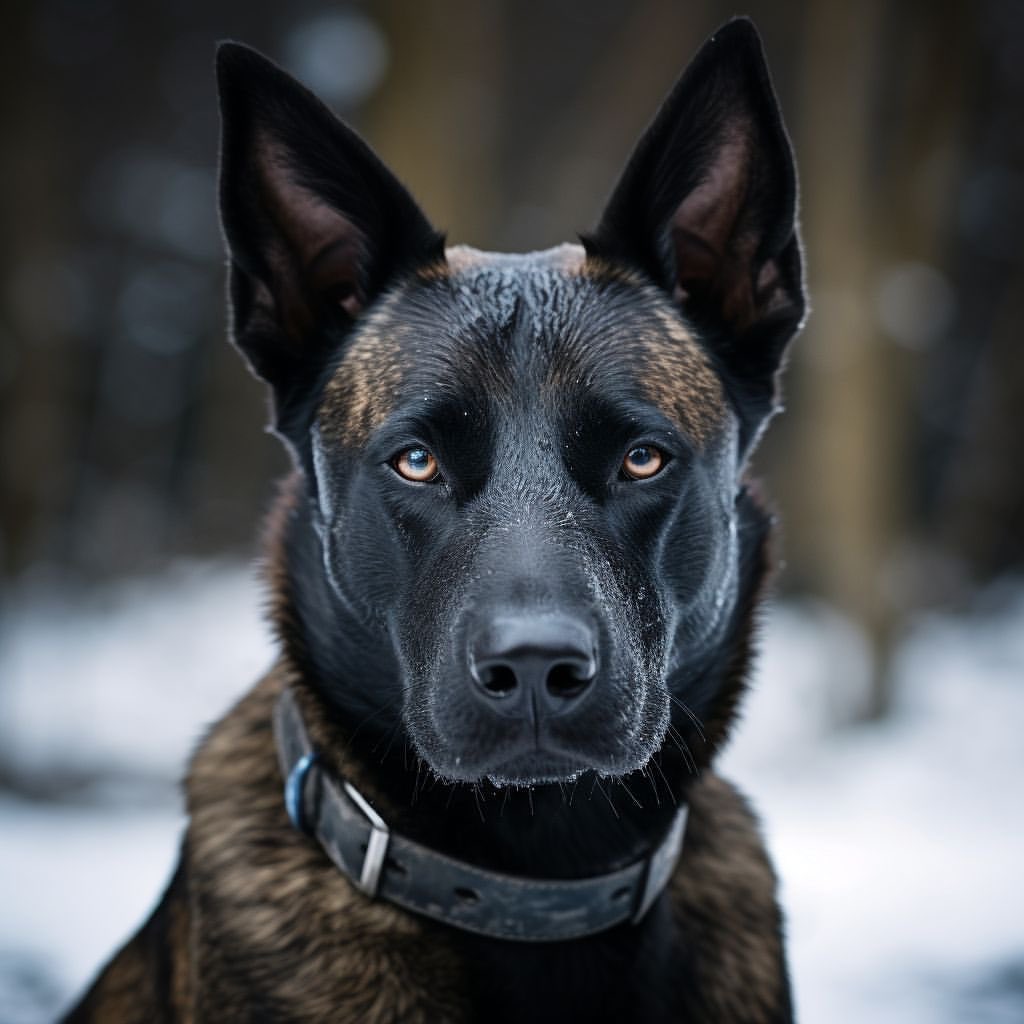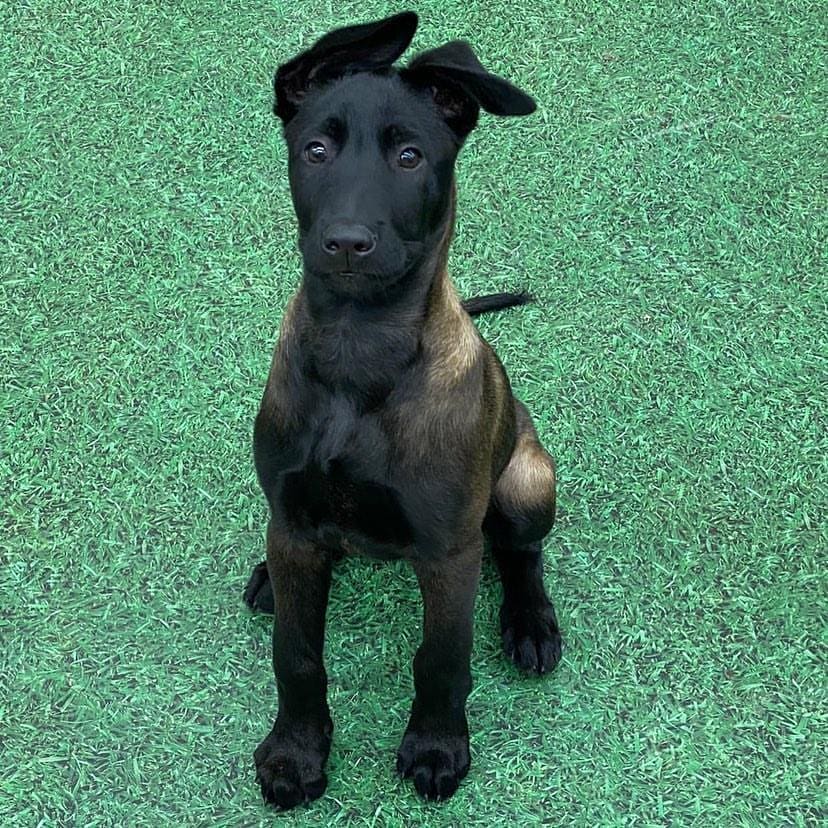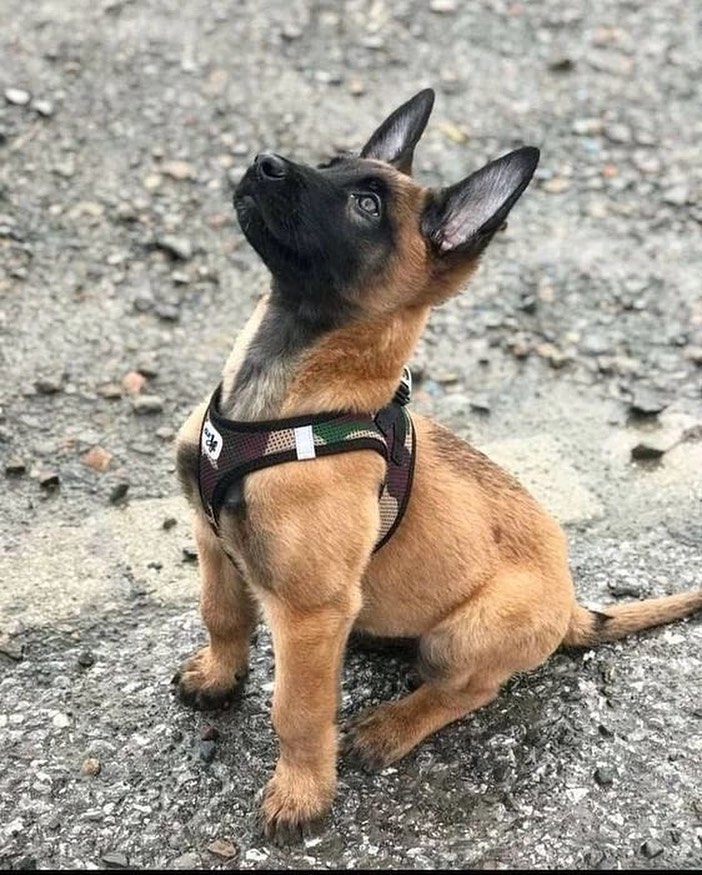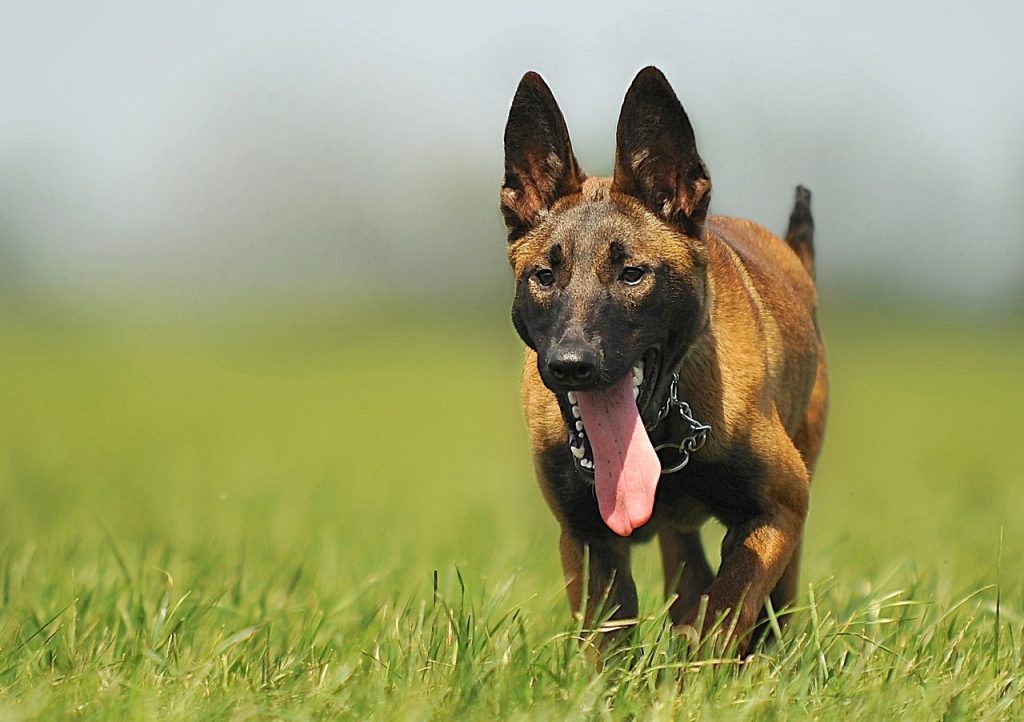Breeding History and Background
The Belgian Malinois, distinguished by its sharp intelligence and remarkable agility, traces its origins to Belgium in the late 1800s. Originally bred for herding, this breed’s exceptional abilities quickly transcended pastoral duties. The Malinois is part of the Belgian Shepherd family, which includes three other varieties: the Tervuren, the Laekenois, and the Groenendael. While these breeds share a common ancestry, the Malinois is distinct in its short, fawn-colored coat and black mask.

A desire for a hardworking, versatile dog drove the breed’s development. Malinois were adept at herding and excelled in guarding and police work. During World War I, their roles expanded to include messengers and Red Cross dogs, a testament to their trainability and resilience. Today, the Belgian Malinois is celebrated globally for its roles in law enforcement, search and rescue, and as a loyal companion. As a responsible dog owner, it’s essential to recognize the Malinois’s need for mental and physical stimulation to thrive.
Assessing Trainability and Temperament
Belgian Malinois are among the most trainable dog breeds, renowned for their intelligence and eagerness to please. This breed is highly receptive to training, making them ideal for various roles, from family pets to service dogs. However, their intelligence also requires mental stimulation to prevent boredom and destructive behaviors.
Temperamentally, Malinois are alert, confident, and protective, which make them excellent guard dogs. They are loyal and affectionate with their families but can be reserved around strangers. Early socialization and training are crucial in shaping a well-adjusted temperament, preventing over-guarding and aggressive tendencies.
Understanding Exercise Needs
Due to their high energy levels, Belgian Malinois require substantial exercise to maintain their physical and mental well-being. A minimum of 60-90 minutes of vigorous daily exercise is recommended. This could include running, playing fetch, agility training, or participating in canine sports. Mental stimulation, such as puzzle toys, training sessions, and interactive play, is equally important. Neglecting their exercise needs can lead to frustration, manifesting in destructive behavior and excessive barking.
Tips for Train a Belgian Malinois
Immediate Training: Starting Right Away
Introducing training at a young age is crucial for Belgian Malinois. As early as eight weeks old, puppies can learn basic commands like ‘sit,’ ‘stay,’ and ‘come.’ Consistency is vital; regular training help establish rules and boundaries, which are essential for their development. Early training sets the foundation for more advanced training as they grow.
The Power of Early Socialization
Socialization is vital for Belgian Malinois puppies. It involves exposing them to various environments, people, and other animals in a safe and controlled manner. Proper socialization reduces fear and aggression in unfamiliar situations and helps develop a well-rounded, confident adult dog. Puppy classes, dog parks, and regular walks in different settings are excellent ways to socialize a Malinois. Additionally, early Belgian Malinois training should focus on establishing clear rules and boundaries to channel their high energy and intelligence effectively.
Motivating Your Malinois: The Role of Food
Food is an effective motivator in Malinois training. High-value treats can reward desired behaviors, making training more productive. It’s crucial to balance treat-based rewards with other forms of reinforcement like praise and play to prevent overreliance on food.
Building Focus and Engagement
Training a Belgian Malinois dog requires nurturing their focus and engagement. This can be achieved through short, frequent training sessions that are fun and rewarding. Keeping a Malinois mentally engaged prevents distractions and enhances their learning capability. Whether it’s obedience training, agility exercises, or interactive games, providing mental stimulation is essential for a Belgian Malinois’s overall well-being and behavior.
Incorporating Distractions Gradually
Introducing distractions gradually is crucial for training a Belgian Malinois. Initially, training should occur in a quiet environment. As the dog becomes more proficient, gradually increase the level of distractions. This helps the dog learn to stay focused and obey commands in any setting.
Positive Training Approach
A positive training approach, using rewards and praise, is most effective for Belgian Malinois owners. This method builds trust and strengthens the dog’s and the owner’s bond. Positive reinforcement encourages the dog to repeat good behavior without fear of harsh consequences.

Meeting Exercise Requirements
Adequate exercise is integral to teaching your Belgian Malinois. A well-exercised Malinois is more attentive and manageable during training sessions. Exercise also helps burn off excess energy, making them less prone to disruptive behavior.
Utilizing Effective Training Tools
Various tools, including leashes, harnesses, clickers, and training collars, can enhance Malinois training. Choosing tools that support positive training methods and are comfortable for the dog is essential.
Implementing Negative Reinforcement Correctly
Negative reinforcement should be used sparingly and correctly. It involves removing an undesirable outcome when the desired behavior is performed. For instance, it ceases pressure on a leash when the dog walks correctly. It’s crucial to ensure that negative reinforcement is not confused with punishment, which can harm the dog’s well-being.
The Benefits of Professional Training Classes
Professional training classes offer structured learning environments and expert guidance. These classes provide socialization opportunities and can address specific training challenges. They are especially beneficial for first-time Malinois owners.
Essential Training Equipment and Supplies
Critical training supplies for a Belgian Malinois include a sturdy collar or harness, a reliable leash, training treats, a clicker for clicker training, interactive toys, and chew toys. Choosing quality, durable equipment is essential for the safety and effectiveness of the training.
Effective Belgian Malinois Training Methods
Training a Belgian Malinois requires a tailored approach capitalizing on their intelligence, energy, and learning eagerness. This section delves into various effective training methods for the Malinois breed.
Positive Reinforcement Techniques
Positive reinforcement is an approach where desired behaviors are rewarded, thus increasing the likelihood of these behaviors being repeated. For Malinois, this method is particularly effective due to its responsive nature. It’s essential to understand the timing and consistency of rewards. Immediately rewarding the dog after a desired action helps them make a clear connection between the behavior and the reward. The rewards can vary from treats, affection, or playtime, depending on what motivates the individual dog the most. As the dog masters a behavior, gradually decrease treat-based rewards, transitioning to verbal praise or a pat, which will be practical when treats are unavailable.
Clicker Training Fundamentals
Clicker training is a subset of positive reinforcement that uses a sound (click) to mark the correct behavior. The sharp, distinct sound of the clicker as soon as the dog performs the desired action helps in precise training. The key is to follow the click with a reward immediately. This method is particularly effective in shaping new behaviors and refining existing ones. Over time, the Malinois learns to associate the click with positive outcomes, making process of train your belgian Malinois more efficient. Clicker training is highly beneficial in teaching complex commands or tricks, as it allows for more precise communication about which specific behavior is being rewarded.

The Role of Voice Commands
Voice directions are a fundamental aspect of training. For a breed like the Malinois, it’s essential to use clear, consistent commands. The tone of voice plays a significant role – it should be firm yet positive. Training sessions should start with basic commands such as ‘sit,’ ‘stay,’ ‘come’ and gradually progress to more complex directions. Repetition and consistency are key. Practicing direction in various environments ensures the dog listens and obeys regardless of distractions.
Obedience Training Strategies
Obedience training is vital for instilling good manners and ensuring the dog’s safety and the safety of others. Start with the basics and ensure the Malinois masters each command before moving on to more challenging tasks. Consistency in order language and routine is crucial. Practice in different settings and scenarios to ensure the dog’s obedience is reliable. Regular sessions of dog training help reinforce learned behaviors and strengthen the bond between the dog and its handler.
Protection Training Overview
Protection training should be approached with caution and ideally under professional guidance. It is unsuitable for all Malinois and should only be considered if the dog has a suitable temperament. This training focuses on teaching the dog to protect its handler or property on command and should be done responsibly, ensuring the dog’s and others’ safety. It’s vital to ensure that this training encourages aggression instead of controlled protective behavior.
Potty Training Basics
Potty training is one of the first training challenges faced by Malinois owners. Establish a routine and take the puppy to the designated bathroom spot regularly. Praise and reward the puppy immediately after they use this spot. Consistency and patience are essential to successful potty training. Accidents should be handled without punishment; instead, focus on reinforcing the correct behavior.
The Importance of Early Socialization
Early socialization can significantly impact a Malinois’ temperament and behavior. Exposing the puppy to a variety of people, animals, environments, and experiences in a positive and controlled manner helps them become well-adjusted adults. Socialization should be done gradually and carefully to avoid overwhelming the puppy. Positive experiences during this crucial developmental phase can prevent future behavioral issues such as fearfulness or aggression.
Training Do’s and Don’ts
| Do’s | Don’ts |
| Start Training Early: Begin immediately to set a solid foundation. | Delaying Training: Starting late can lead to ingrained bad habits. |
| Be Consistent: Use consistent commands and rewards for clarity. | Being Inconsistent: Inconsistency can confuse and hinder learning. |
| Use Positive Reinforcement: Reward good behaviors to encourage repetition. | Using Harsh Discipline: This can lead to fear and mistrust. |
| Ensure Proper Socialization: Expose to various stimuli for well-rounded behavior. | Neglecting Socialization: This can result in fear or aggression in new situations. |
| Provide Adequate Exercise: Necessary for their high energy and mental health. | Skipping Exercise: This can lead to destructive behaviors. |
| Seek Professional Guidance, Especially for new owners or specific challenges. | Ignoring Professional Help: Professional advice can prevent further issues. |
| Regular Health Check-ups: Ensures health issues don’t affect training. | Ignoring Health Issues Can impact behavior and learning ability. |
Expanding on Common Mistakes in Malinois Training

In addition to the above table, it’s essential to delve deeper into common training mistakes to provide a clearer understanding of what to avoid:
- Overlooking Mental Stimulation: Belgian Malinois are physically active and intellectually curious. Neglecting mental stimulation, such as puzzle games, trick training, or advanced obedience, can lead to boredom and behavioral issues.
- Training Too Long or Short: Each session of dog training should be long enough to be effective but not so long that the dog loses interest or becomes fatigued. Approximately 10-15 minutes per session, multiple times daily, is ideal for a Malinois.
- Failing to Gradually Introduce Distractions: Training in a distraction-free environment is initially crucial, but gradually introducing distractions is essential to ensure your Malinois can follow commands in any setting.
- Expecting Too Much, Too Soon: Set realistic goals and understand that training is a progressive process. Expecting too much from your Malinois too quickly can lead to frustration.
- Lack of Routine: Malinois thrive on routine. A lack of a structured training schedule can lead to confusion and inconsistency in learning and behavior.
By understanding and adhering to these do’s and don’ts, owners can significantly enhance the effectiveness of their training efforts and enjoy a harmonious relationship with their Belgian Malinois.
Professional Training Resources
Selecting Dog Trainers and Schools
When it comes to finding the right trainer or school for your Belgian Malinois, there are several key factors to consider:
- Specialization in Belgian Malinois: Look for dog behavior consultants with experience and expertise with the Belgian Malinois breed. Their unique characteristics, such as high energy, intelligence, and sensitivity, require specialized training approaches.
- Training Methods: Ensure that the trainers use positive reinforcement techniques. These methods are practical and promote a healthy relationship between you and your Malinois. Avoid trainers who rely on punishment-based methods, as these can harm your dog’s temperament and well-being.
- Reputation and Reviews: Research the trainer’s or school’s reputation. Look for reviews from other Malinois owners or seek recommendations from local breed clubs or veterinarians. Positive feedback from other clients, particularly those with the same breed, indicates effectiveness and reliability.
- Certifications and Qualifications: Check the trainer’s qualifications. Certified canine behaviorists, especially those with credentials from recognized canine training associations, will likely provide higher-quality training.
- Observation Opportunities: Ask if you can observe a dog training before enrolling. This allows you to see the training style, how the dog behavior consultant interacts with the dogs and the response from the trained dogs.
- Customization of Training: Each Malinois is unique. A good dog behavior consultant will assess your dog’s needs and tailor the training accordingly rather than using a one-size-fits-all approach.
- Post-Training Support: Consider whether the trainer or school offers support after the dog training. Ongoing support can be crucial for addressing any future training challenges.
Understanding Malinois Personality Traits

The Belgian Malinois breed has distinct personality traits that set them apart from other dog breeds. A unique blend of intelligence, energy, and loyalty characterizes their temperament. These dogs are known for their quick learning ability and adaptability, making them suitable for various roles, from family companions to working dogs in police and military services. However, their high intelligence also means they require regular mental stimulation to prevent boredom and the development of destructive behaviors.
One of the most notable traits of the Malinois is their protective solid instinct, which makes them excellent guard dogs. They are naturally wary of strangers and need proper socialization from a young age to ensure they develop into well-adjusted adults. Malinois are also known for their high energy levels and need for regular, vigorous exercise. Without sufficient physical activity, they can become restless and exhibit problematic behaviors.
Key Personality Traits of the Belgian Malinois:
- Intelligent and Quick to Learn: Excels in problem-solving and can be trained for advanced tasks.
- Highly Energetic: Requires significant daily exercise for physical and mental well-being.
- Loyal and Protective: Forms strong bonds with family and is naturally protective.
- Sensitive: Responds best to positive reinforcement and gentle training methods.
- Social and Affectionate with Family: Enjoys being part of family activities and is affectionate with familiar people.
- Wary of Strangers: Can be reserved or cautious around unfamiliar people.
- Adaptable: Capable of adjusting to different environments and situations when properly trained and socialized.
Understanding these traits is crucial for anyone considering a Belgian Malinois as a pet or working dog. Recognizing and respecting their characteristics ensures a harmonious relationship and helps in providing an environment where the Malinois can thrive.
Final Thoughts and Recap
In conclusion, training a Belgian Malinois requires commitment, consistency, and an understanding of the breed’s unique characteristics. Positive reinforcement, early socialization, and proper exercise can lead to a well-trained and well-adjusted companion. Remember, every Malinois is an individual; patience and persistence are essential in the training journey.
